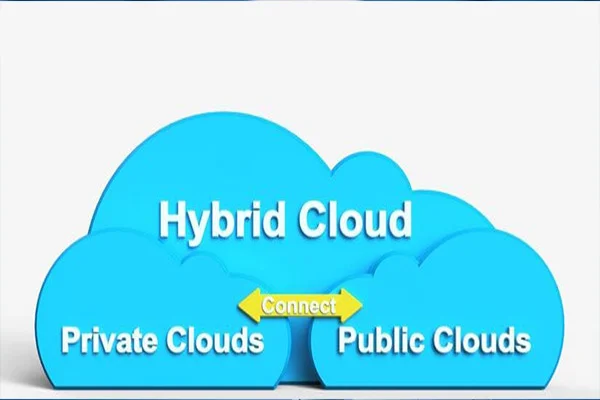Cloud Enablement for CAD Applications
Table of content Current State of Cloud-based CAD Technological Issues with CAD on the Cloud Adoption Issues Way Forward Over the last decade, multiple manufacturing-related applications have moved to the cloud to reduce hardware investments and to avail of the benefits of IT resource aggregation. CAD, which plays a crucial role in product development, is often considered a potential candidate for cloud enablement. As CAD software consumes dedicated high-end compute and graphics resources, a definite business case exists to move CAD on cloud. Moving CAD on cloud can bring multiple benefits like increased flexibility, better collaboration, and ultimately reduced cost of hardware and maintenance. AutoCad Cloud is one such example of cloud-based CAD platform which enables creating, editing, viewing, and sharing drawings without having to install it on your system. Almost all CAD ISVs are considering some form of cloud enablement, but it has not picked the pace for multiple reasons. The following sections discuss these issues and possibly how they will evolve. Current State of Cloud-based CAD Cloud has popularized the on-demand access to resources and usage-based charges. It has helped the customers to transition the cash flow from an upfront fixed cost to a variable cost. Almost all types of software can now be licensed in this model. CAD software ISVs are following this trend by shifting from perpetual license + AMC to an annual subscription model with support. For the cloud, adoption evolution can be seen in all three types of cloud adoption – IaaS, PaaS, and SaaS. There are visible progressions in each type, and a few ready solutions are already available in the market. However, there remain technology hurdles and user adoption issues. Technological Issues with CAD on the Cloud Moving CAD on cloud requires some critical pieces to be recreated to suit the cloud architecture. It would take a significant effort to redevelop these pieces and bring them to par with current levels. CAD ISVs strive to address the above and many other technical issues, with few breakthroughs. However, user adoption is still low due to various process-related issues. Adoption Issues CAD Applications have been used by various product development OEMs and their suppliers for over a quarter century. These organizations have evolved custom workflows and security processes around CAD. Moving to cloud-based CAD will need multiple adjustments to these processes, which could be a significant hurdle in adoption. In addition to the above points, there are factors like usability due to latency issues and significant concerns of the customers in the form of vendor lock-in. These have been discussed at many forums, hence not elaborated here. Way forward As cloud technology advances, some challenges could get addressed or become irrelevant. However, looking at the overall picture, cloud adoption is likely to evolve on two fronts –
Read MoreCarving a roadmap to Digital Transformation
Table of Content Creating a digital transformation roadmap SWOT analysis Defining mini-projects Identifying challenges along the way Define Corporate Values Do you have a strategy for digital transformation? According to a Statista survey published in 2021, about 60 percent of executive search firms declared that they had implemented a digital transformation strategy or improved their efforts in developing one due to the effects of the COVID-19 crisis. But before you can build a digital transformation strategy, you must establish a foundation. If your retail business operates both in physical stores and online, you must invest in the capability of the online channel to improve the customer experience. Invest in tools that map the user journey and resources to collect data. Moreover, your roadmap should include all the challenges that will come up along the way. Please go through some of the common roadblocks faced by companies undergoing digital transformation and the steps to overcome them. Creating a digital transformation roadmap It is essential to create a step-by-step roadmap to digital transformation that will provide clear directions and a clear destination. While there are many factors to consider when determining the best way to drive digital transformation, team alignment is one of the most important. The people responsible for executing the business strategy must share the vision and embrace open communication. Failure to be specific about the transformation details will leave things to chance and lead to misguided initiatives. A well-developed digital transformation roadmap should focus on integration and alignment. All stakeholders must be on the same page, and the technology must be integrated with existing systems and processes. In the digital age, companies can’t afford to have one piecemeal approach because it can leave gaps in security and undermine the overall goal. A comprehensive roadmap integrates technologies, software, and processes to maximize the chances of success. A digital transformation strategy aims to eliminate inefficiencies, improve customer service, and increase revenue. It is important to remember that digital transformation is a process that takes years to complete. While the result may differ for each company, it will help to have a general idea of how to approach the process and plan accordingly. For example, the end goal should be “Point B” in the roadmap, while the next step is to fill in the gaps between where the company currently is and where it wants to be. SWOT analysis Next, you need to consider your competitive position and identify the challenges ahead. While it’s essential to be realistic when determining your competition’s strengths, identifying threats is equally important. Keeping rose-colored glasses on will prevent you from making the best strategic decisions. However, assessing threats is key to your business’s digital transformation success. Make sure you’re honest and objective in evaluating the current position of your business. Using SWOT analysis in the context of digital transformation can effectively help your office transition. To create a successful SWOT analysis, you’ll need a diverse team composed of executive and mid-level employees. Include people from various departments so everyone can contribute their knowledge and expertise. The more varied the team, the less likely it will be to make a mistake. The best approach is to separate internal and external strengths and identify what your business can do to take advantage of them. The most effective way to identify internal and external strengths and weaknesses are to divide the categories by controllable and uncontrollable factors. It will help you make a more accurate SWOT analysis. The main mistake people make is to confound weaknesses and opportunities and make the SWOT analysis process more difficult. Once you have done this, you’ll be better prepared to determine what your next steps should be. A proper SWOT analysis can help you identify your company’s strengths, weaknesses, opportunities, and threats. It can also help you determine how to capitalize on these factors to strengthen your competitive position. Performing a SWOT analysis can help you formulate wise business strategies that will boost your company’s competitiveness and position in the market. It’s also a good idea to consider external factors like population growth, competitive trends, and economic climate, as they can affect your company’s ability to compete. If you haven’t incorporated SWOT analysis yet, it’s time to do so. Defining mini-projects Creating a digital transformation initiative roadmap should start with defining the key activities. These activities include technology projects, supplier ecosystem changes, and business process modifications. It should also identify high-level cost-benefit projections for each activity. Then, define each activity on the roadmap as a mini-project. By defining these mini-projects, the roadmap can be used as a guide to determine which activities are the most critical and which ones are not. Clearly define the goals and objectives for each mini-project. Identify the purposes and responsibilities of each team member. Determine how each member of the team will contribute to the project. Make sure they are aligned with the overall strategy. Assign roles to individuals, assign responsibility for specific tasks, and set milestones for success. After each project is completed, evaluate results, and determine if the project has met expectations. Identifying challenges along the way Businesses may face many challenges while embarking on a digital transformation journey. They may lack the skills and resources to implement a full-fledged digital strategy. Assessing an organization’s readiness for digital transformation is necessary to avoid getting stuck in a rut. While the organization may be reluctant to use new technologies and processes, it may still be able to work with early adopters that are prepared to implement these technologies in operations. As companies begin their digital transformation journey, they should analyze the data collected by their existing processes and measure the impact of these changes on their business. Data analysis should be conducted to identify trends and patterns. For example, some prominent OEMs produce enhanced equipment that can improve fuel efficiency, predict downtime, and streamline maintenance processes. These advanced features are known as Equipment-as-a-Service (EaaS). Embedding digital technology within an organization requires the buy-in of every employee,
Read MoreThe Manufacturing sector’s road to Digital Transformation
For the last 20 years, the digital revolution has cast its shadow over every area of a well-functioning society, be it commerce, banking, or education and healthcare. The common thread throughout this digital revolution has been that those who do not embrace technology will eventually be left behind and replaced. It especially applies to manufacturers, who face the challenge of reducing costs and constantly keeping up with the global marketplace competition. This article will define what Digital Transformation is, explore its implementation, and discuss the challenges it presents. Finally, we’ll look at the ideal Digital Transformation strategy. Taking advantage of new technology such as 5G can improve visibility, lower costs, and increase flexibility; the benefits of digital transformation in the manufacturing sector are significant. But how can companies get started? Let’s look at some of the challenges and opportunities of digital transformation in manufacturing. What does digital transformation mean? In simple words, digital transformation is the large-scale exodus of the manufacturing sector and other domains from the traditional, analogue, manual mode of work toward digital technologies. It isn’t just about putting a few computers onto the table. It is about embracing digital technology from top to bottom, end-to-end levels. Digital transformation is not related to physical conversion but also involves statistical analysis and data to enhance manufacturing processes to ensure a thriving business. The advent of digitalization in manufacturing can help companies become more flexible, responsive, and cost-efficient. By integrating modern tools into production, digital transformation helps companies manage inventory and costs. It can also improve service to customers. By incorporating digital tools into manufacturing processes, companies can enhance the quality of products and reduce non-productive time. Digital tools help companies stay on top of the latest trends in the industry, and they improve productivity. It is important to remember that digital transformation is a process that takes years to complete. While the result may differ for each company, it will help to have a general idea of how to approach the process and plan accordingly. For example, the end goal should be “Point B” in the roadmap, while the next step is to fill in the gaps between where the company currently is and where it wants to be. Caution! A business that overlooks the importance of digital transformation is setting itself up for failure and providing their competitors an advantage in the market. In a survey of manufacturing companies, it was found that 36% accelerated their digital transformation. A further 35% slowed their digital transformation, and 47% remained untouched. Of the companies that have undertaken digital transformation, only 30% plan to increase their investment in this process by 2022. As per a Statista survey, spending on digital transformation and services worldwide has grown exponentially from 2017 to 2025 (in trillion US dollars). Implementation of Digital Transformation Implementation of digital transformation in your company might seem a bit uphill task. However, there are four key areas where you can focus on implementing digital transformation successfully. They are as follows: Boost your employees Educate, Encourage, and Empower your employees. These are the three words you should focus on when introducing new technologies to your employees. It can be challenging if they are reluctant to adopt it. You need to give them some time and space to innovate as much as possible. Even if it is one step at a time, it is still worth consideration. Interact with your Customers Customers have a higher expectation of service speed and an enhanced experience. Utilize data and statistical analysis for better engagement with customers. It helps companies cater to the needs of their customers by offering the best possible experience. Track their interactions, choices, and frequent search history to understand their mindset. Enable customization to let customers play around with products and decide what they need. Optimize the work processes Optimize your processes and human resources. The old-school way of working leaves many redundancies and sections where the time lag is so remarkable that it can affect your entire business. The optimizing system leaves you relieved that your systems are sufficiently tuned to operate the business smoothly. Transform the core of your business if necessary It refers to changing the core of your business to keep up with technological advances. You must adapt to the changing market or be left behind with increasingly irrelevant products/services. If that requires modernization and introducing new technologies, so be it. The Challenges with Digital Transformation Despite technological advances, traditional manufacturing companies face increasing competition from newcomers who successfully apply new technologies to their businesses. You must overcome certain obstacles in digital transformation to gain a competitive advantage. These include: Worker syndrome One of the biggest challenges in implementing digital transformation is culture. As automation becomes more prevalent, many workers look down on the benefits of digitalization. In fact, the challenges with digitalizing the manufacturing sector are directly related to the workers themselves. Employee resistance to change and employee pushback may be due to their inexperience with the technology or fear that automation will take away their jobs. Inadequate Information A lack of information is a significant problem for many businesses. They don’t have the digital expertise necessary to understand what’s available or how it can be used, especially the workers. Unfortunately, errors in manufacturing are universal. Workers may set up machines incorrectly, mishandle equipment, or send sensitive data to an unknown email attachment. Moreover, workers will be left with an unavoidable culture of ‘that’s not how we do things. Poor Strategy The lack of a strategy is a significant hindrance for many businesses on their way to completing the digital transformation—a poorly planned strategy results in failures. For instance, a lack of clear path, funding, and legacy systems are just a few of the most common strategic obstacles. Therefore, almost 50% of manufacturers enlist the help of consultants to undertake digital transformation projects. Prescient Technologies has been a consultant to some top names worldwide who wanted to embrace digital transformation. Let us help you in your
Read More5 Reasons You Should Consider the Cloud for Your Business
Cloud computing and storage are breakthrough inventions of the IT spectrum. Cloud services and the database has saved plenty of businesses from the hassles of installing database infrastructure hardware and related costs. As a part of the Internet-of-Things, the Cloud can be incorporated and merged with almost any technology. The main value cloud negates the installation of additional ware to store information. One can store zillions of data directly into a cloud database in one click. Cloud is a critical factor in the emergence of virtual workspaces and is gaining more foothold and prominence after the Covid-19 pandemic. Cloud computing can offer businesses many benefits. Most companies use cloud computing to set up virtual offices that can be accessed from anywhere in the world. Cloud computing can make communication and coordination between employees seamless. The technology behind the Cloud is constantly improving, with innovations being introduced each year. With that said, if your business still hasn’t adopted the technology, consider the following reasons why you should. The Cloud can help save on expenses Businesses often hesitate to adapt to new technologies because of cost concerns. But the thing about cloud hosting is that you don’t need to spend too much on hardware if you want to adopt it. Space, power, air-conditioning, maintenance, and insurance costs aren’t things that you have to worry about because your provider’s servers will handle most of the heavy lifting for you. More importantly, most cloud services have very flexible plans, allowing you to only pay for services that you absolutely need. Scalability is a built-in feature Scaling up your business costs money. Without the Cloud, you’ll need to purchase hardware, floor space, and spend more on power if you want to scale up your servers. However, Cloud brings scalability to the game. Typically, if you receive a boost in website traffic, you’ll need to purchase new servers. But if you’re working with a cloud service provider, you might only need to update your plan. Alternatively, you can also subscribe to a pay-as-you-go payment scheme, wherein you only pay for resources that you need. Going down this route means that you won’t need to pay for a package permanently and will only need to pay your provider based on your exact needs. Flexibility and scalability are two things to expect when working with the Cloud. Cloud-based services are blazing fast To stay relevant, a cloud service provider adapts to the latest tech. Service providers always make sure that performance is optimized. Because of this, expect providers to take advantage of the latest CPUs, SSDs, and hardware. With so much tech at their disposal, working with any cloud service provider is guaranteed to be a lightning-fast experience. Accessing your files and working on the Cloud should be a seamless, lag- free experience. The Cloud is highly secure Many organizations are concerned that the Cloud isn’t secure. If files are accessible from anywhere in the world, what is the guarantee that they’re being appropriately protected? The truth is cloud service providers place a significant emphasis on security. Cloud hosts carefully monitor their safety, and in most cases, they are more secure than traditional, in-house systems. Data is often encrypted, and things like two-factor authentication can make data theft more difficult for would-be hackers. Collaborating on projects will be easier The Cloud allows members of a company to coordinate over vast distances instantly. This is one of the main reasons why companies invest in cloud-based services. The benefit of working on a worksheet together with someone from across the world is well worth the cost. Grant contractors and other third party’s access to relevant files or records with the click of a button can lead to a ton of productivity. Working with the Cloud can provide your business with various benefits at an affordable cost. Take note of the advantages mentioned in the article and consider investing in the Cloud.
Read MoreWhat is a hybrid cloud?
Cloud computing, or the on-demand availability of computer system resources, has recently taken the world by storm, with cloud providers like AL iCloud, AWS, IBM, Google, Microsoft Azure, and Oracle creating Software-as-a-Service, Marketing-as-a-Service, Analytics-as-a-Service, and now Infrastructure-as-a-Service, amongst others, to capture the seemingly insatiable customer demand for services. Whether a business should go with a private cloud, a public cloud, an omni cloud, or a hybrid cloud aren’t quickly answered without understanding a company’s current set-up and its potential future IT demands. The hybrid cloud creates a single IT infrastructure that runs its applications, systems, and workloads. It joins a company’s on-premises private cloud services with a third-party, public cloud, which gives an organization the ability to select optimal cloud providers for each application, container, or workload and move freely between the two clouds as circumstances and situations change. Some popular third-party vendors like AWS, IBM, Microsoft, Alibaba, and Google, provide their cloud services over the public Internet. Unavailable to the public, private clouds are hosted on-premises and provide businesses with many benefits of a public cloud, i.e., self-service usage, scalability, elasticity, and robust security measures. The fundamental difference between a private and a public cloud is the level of responsibility needed to run them. The IT department of the company hosting the private cloud takes care of all the private cloud’s staffing, cost, accountability, and maintenance expenses. Public clouds, however, are provided over the Internet by a third-party vendor, who charges by consumption, either by CPU, storage, bandwidth, software usage, or a combination of them. Public clouds numb down the cost and hassle of buying, operating, and maintaining on-prem hardware infrastructure and application. The cloud service provider supports and manages the system. Deployment is fast on a public cloud, scalability is almost infinite, the cost is easily controlled, and the system can be highly secure. The hybrid cloud lets an organization choose between multiple cloud providers depending on which company specializes in a particular area. For example, an organization looking for a robust AI platform might go for Google Cloud because Tensor Flow is a powerful Google AI tool that would seamlessly add to Google’s cloud offerings. Companies looking to utilize Excel, Word, Visual Basic, or Microsoft Teams might choose Azure because it’s owned by Microsoft and would probably be the most cost-effective option. Because every implementation is unique and so many variables go into building a cloud solution, organizations should shop around and piece together their solution keeping in mind the advantages and disadvantages of each cloud provider. Traditional hybrid cloud architecture used to come as unsophisticated pre-packaged options, but today’s hybrid cloud architecture is highly focused on supporting the portability of workloads across all cloud environments. Containers and microservice architecture are simplifying the deployment of workloads across multiple cloud options. This approach utilizes a single application composed of many loosely coupled, independently deployable, and reusable more minor services. These applications are being deployed in lightweight containers, including executable units containing both the application code and the virtualized operating system dependencies needed to run everything. Today, the line between public and private clouds is blurring. Public clouds are now going private, and private clouds are going public, but a coalescence is coming. Many cloud vendors now offer on-premises public cloud services that run on a customer’s site. Private clouds can now be found at off-premises data centers, virtual private clouds (VPCs), virtual private networks (VPNs), or even rented from third-party providers. At the same time, a container orchestration platform automates application deployment across multiple cloud establishments. The hybrid cloud has many benefits. At a time when the work-from-home revolution is growing, hybrid clouds can help support a remote workforce. Organizations can reduce IT costs as well as improve scalability, increase collaboration, and enhance innovation. Hybrid clouds provide better business continuity while increasing agility. Counter-intuitively hybrid clouds can improve security and risk management. When jumping into the cloud, an organization is partnering with companies whose very existence is threatened if their security fails. For companies looking to take the next step in their digital transformation, a look to the hybrid cloud is in order.
Read MoreSecuring the Hybrid or Remote Workforce With SASE
Since the transition to hybrid and remote work models began in earnest in 2020, cybercriminals have ramped up their efforts to exploit weaknesses and new vulnerabilities associated with these distributed environments. Surveys and studies have shown that remote workers are often taking shortcuts that circumvent security policies. More than ever, personal devices that may not be configured to meet security requirements are being connected to company resources. Home offices are essentially beyond the control of employers; thus, physical access controls are virtually non-existent. These are a few of the issues companies are struggling with as they strive to provide secure and dependable remote access to their staffers and monitor their work-related activities. Although it was developed before the 2020 workforce transition, the Secure Access Service Edge (SASE) concept seems tailor-made for today’s iteration of the wide-area network. What is SASE? The cloud-based SASE service model combines wide area network (WAN) capabilities with security tools including Firewall as a Service (FDAs), Cloud Access Security Broker (CASB), and zero trust access controls that will address and resolve many issues associated with hybrid and remote workforce environments. SASE facilitates secure connections to resources regardless of where they are in relation to those who need access to them. User access controls are based on identity, location, access timeframes, and user device risk assessments. By using what is known as worldwide points of presence, SASE reduces or eliminates latency across what can be a global network. Zero trust is a critical component of SASE. Traditionally, everything and every user within a secured network is afforded at least some level of trust. For example, a user can move about a network accessing resources based on permissions assigned to their account once logged in. However, zero trust emphasizes on “never trust, always verify” principle. Rather than a user signing in once and having the ability to move laterally around the network during that session, both the user and device being used in a zero-trust environment would be required to authenticate each time they attempted to access designated “micro-perimeters” within the network. These micro-perimeters could be encasing applications or services, data, or other assets. Zero trust controls grant access to a micro-perimeter by verifying user identities, devices, request types, locations, activity history, and timestamps. Should a bad actor manage to gain access to a network protected by zero trust controls, they would likely find it impossible to move about and access critical resources. SASE is highly scalable and flexible. Among others, available security features of SASE may also include data loss prevention, sandboxing, DNS security, and web filtering. Because it is cloud-based, SASE can reduce costs associated with procuring, managing, and maintaining technology resources. Remote work with SASE The SASE components discussed thus far serve as examples of how they can benefit organizations whether they are utilizing hybrid, remote, or more traditional work models. There are, however, some SASE advantages that relate more directly to securing and managing remote employees. SASE facilitates better control over which remote staffers can access applications and websites. It provides more visibility into their access and usage of company resources, thus allowing management to better track those working without direct supervision and ensure that they adhere to policies. The access controls offered by SASE help to lock down home offices by blocking access via unauthorized devices. They prevent the exfiltration of sensitive data and ensure that the absence of organizational control over the physical security of the home office environment does not result in company assets falling into the hands of unauthorized individuals. Additionally, remote workers will connect to company resources via a zero-trust network, thus preventing those resources from being exposed to Internet-based threats. In closing Cybercriminals are increasingly targeting remote employees. New threat vectors seem to emerge daily. Remote location and hybrid work models have now become the standard. The recent Covid-19 pandemic is driving an entirely new model of working. SASE not only addresses the threats via its suite of security controls, but it also provides employers with greater insight into and control over the activities of their remote staffers. SASE dramatically reduces the vulnerabilities associated with maintaining a non-traditional WAN that includes numerous sites in the form of home offices where management lacks control over physical access. While the transition to SASE takes time, especially for an organization currently maintaining its own IT infrastructure, the long-term benefits make it worth the effort, and they may include cost savings as well.
Read MoreCloud Enablement for Enterprise Applications
By Nikhil Shintre Table of Content Models for Cloud Enablement Comparing the Enablement Models How to Choose Between the Models Over the last decade or so, cloud has evolved as a preferred IT deployment model. Popularity of cloud can be gauged from the fact that majority of the enterprise IT providers are now having some kind of cloud offering, and most of the startup launched in this period are cloud native. As cloud adoption becomes common practice and the benefits are well established, a larger number of enterprises move their current application stacks to cloud. As part of this shift, they also expect the Independent Software Vendors (ISVs) to enable and optimize their software for cloud. However, for the ISVs this require much deeper considerations like commercial models for cloud enablement, acceptance by the existing customers and the impact on acquisition / onboarding of new customers. Models for Cloud Enablement From our experience, we see three possible models for cloud enablement – Cloud enablement in customer setup, Cloud enablement with the setup managed by ISV, and a full fledge multi-tenant SaaS setup managed by ISV. From the ISV perspective, this is easiest to implement by adopting certain services like scaling, storage and monitoring in the software. However, since each customer could have their own cloud preference, it is advisable not to commit too much to a specific cloud service. In this model ISV handles complete deployment, monitoring and maintenance. This gives ISV flexibility to choose the cloud provider and plan the cloud enablement and optimization. This requires major restructuring of the application to ensure software level separation of tenant specific data and user access. Since this is software level separation, it needs to be carefully maintained during the development. Comparing the Enablement Models Each of the above three models has its pros and cons in terms of effort for cloud enablement, maintenance of the setup, and licensing / pricing. These aspects can be compared as below. In Customer Cloud Single Tenant SaaS Multi-Tenant SaaS Enablement efforts Minimal Minimal Sizeable Cost of Infrastructure Directly paid by customer Can be charged to customer at actuals Must be bundled in subscription price Licensing Model Can continue with existing mechanism Can continue with existing mechanism Need to implement subscription model License Upgrade / Downgrade Very difficult to implement Can enable upgrade / downgrade Easy to upgrade / downgrade Upgrade to New Versions Customer decides on upgrade schedule Flexibility to delay for specific cases All customers get upgraded at once Upgrade Frequency Must be less Can be moderate Frequent upgrades possible Onboarding Efforts Same as existing Reduced efforts Minimal efforts Availability monitoring By customer By ISV By ISV How to Choose Between the Models Each of the three models serve a particular situation, but it is difficult to define specific rules around it. Instead, as a general guideline following aspects can be considered – As a final word, the cloud enablement model must ensure smooth transition for existing customers, and ease of acquiring / onboarding new customers. So it is important to involve the product management, engineering and the customer support functions in any decision. References-https://docs.microsoft.com/en-us/azure/azure-sql/database/saas-tenancy-app-design-patternshttps://aws.amazon.com/blogs/apn/architecting-successful-saas-understanding-cloud-based-software-as-a-service-models/https://cloud.google.com/kubernetes-engine/docs/best-practices/enterprise-multitenancy
Read More





